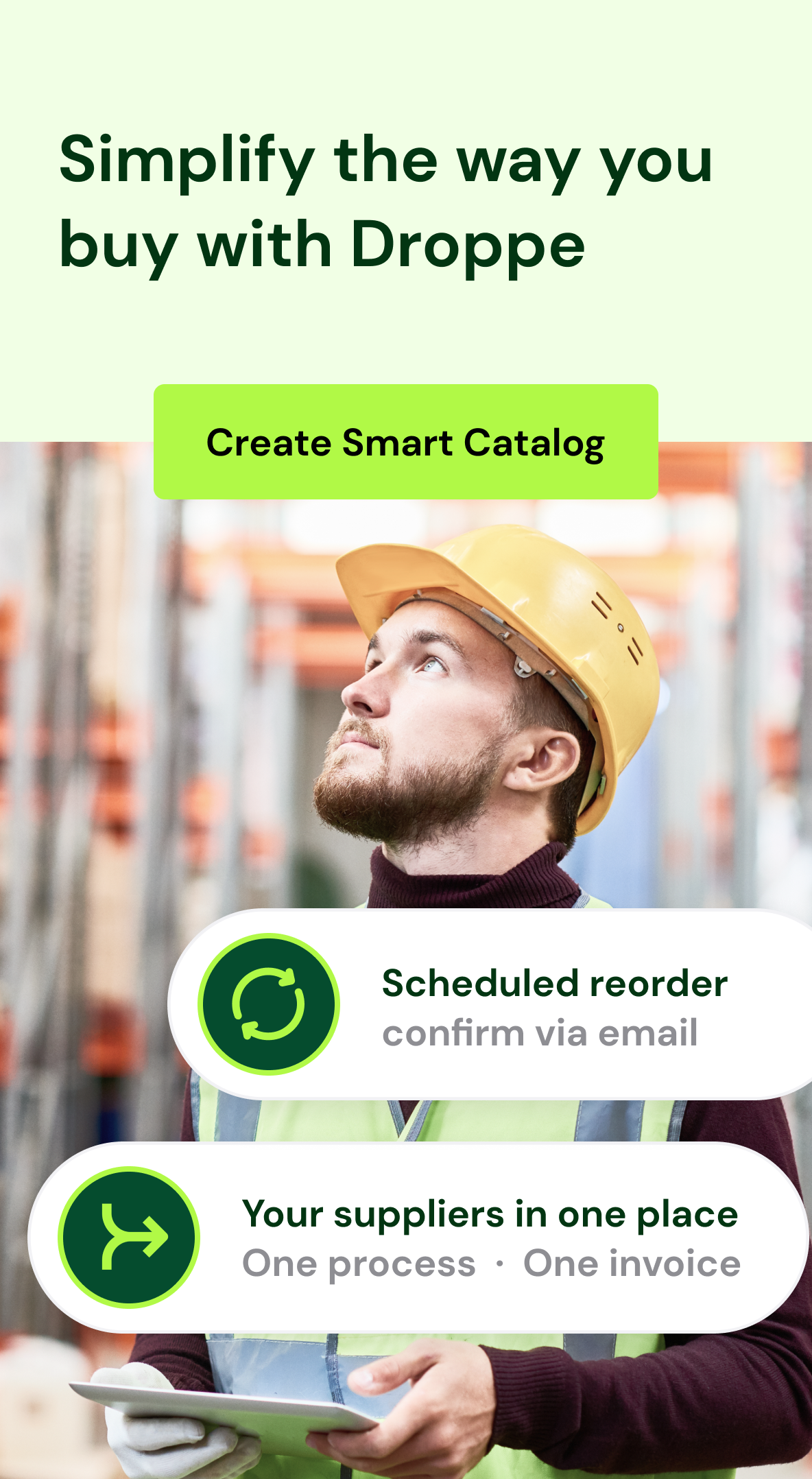Introduction
Spend management requires procurement compliance to ensure firms follow internal rules, regulatory requirements, and best practices. Companies may reduce risks, prevent unauthorised expenditure, and ensure financial integrity with strong systems. This tutorial covers procurement compliance basics including creating a framework, prioritising projects, and solving frequent problems. Long-term success requires a robust compliance approach, whether you’re reducing supplier contracts or aligning procurement goals with organisational goals.
What is procurement compliance?
Procurement compliance entails creating, implementing, and enforcing firm spend management systems to prevent maverick expenditure and ensure that spend follows company policy.
The proportion of expenditure procurement impacts or contract spend are typically used to measure procurement compliance. Some companies monitor how successfully they use specified suppliers or how those suppliers perform.
Rarely will you hear about on-time payments, how frequently the accounts payable department employed the lowest-cost payment option, or how effectively your sourcing personnel follow protocols and rules.
Every organisation defines and addresses procurement compliance differently.
Prioritising Procurement Compliance Initiatives
Realise that procurement compliance challenges vary, and not for apparent reasons.
Compare your contract expenditure % to your on-time payments.
That proportion of contract expenditure has a higher, but less immediate, influence on your bottom line is obvious. This alone may put it at the top of your list.
Creating a Procurement Compliance Framework
How do you create, design, and execute a compliance framework for your company? These nine steps will get you started.
Be sure to incorporate stakeholders throughout the process.
1. Know Your Procurement Compliance Status
Do you have compliance concerns in certain business areas? Are departments and teams running well but not sharing information?
2. Ranking Compliance Priorities
If you use ad hoc methods, you may have immediate concerns. If your C-Suite has cut down, knowing what everyone is purchasing is priority #1.
Advanced traders may have strong contracts, but not everyone buys against them.
So what? Start with your procurement compliance objectives’ business case.Will help you distinguish between developing a procedure for its own purpose and offering value.
3. Explore Compliance Options
- You may need to create value-driven procedures from scratch?
- Need better, process-aligned tools?
- Should you get better training on your current tools?
Research all possible solutions to a problem, not just the first.
4. Knowing Your Resources
Think widely. Assess your financial resources, team skills, intra-department relationships, and organisational culture. Optimising procurement compliance involves all of them.
- Does your company act swiftly on solid business cases?
- People typically willing to try new things?
- Are some departments easier to deal with?
- Can you directly manage any business areas?
Recognise obstacles and pleasant sailing beforehand.
5. Map complexity
Map each thing on your list by effect and difficulty. This problem may include any project obstacle. Consider funding, internal expertise, stakeholder permission, success depending on end-users beyond your control, or anything else you listed in #4.
6. List your “High-Value Targets”
It should be straightforward to tick off “Low Impact, High Difficulty” at this stage. “High Impact, Low Difficulty” are typically obvious. Attack them first to build momentum.
The most fruitful work is often focused on “High Impact, High Difficulty” topics, which involve continual stakeholder engagement, substantial due diligence, and/or large funding.
Carefully examine low-cost things. It normally takes a major change management effort to get into the upper right quadrant, even if it’s cheap. Plan beforehand.
“Low Impact, Low Difficulty” initiatives are frequently afterthoughts. These are unlikely to be addressed.
7. Definition of procurement compliance success
After creating an action plan, consider procurement compliance success. Perhaps you want to make your accountants more effective by requiring receipts to be sent to the same email address. Compliance achievement may mean no more crumpled receipts on their desk.
Alternatively, you may want to completely integrate your teams and tools’ data and processes to get additional value. Here, you may have contract expenditure percentage, preferred supplier utilisation, etc.
Whatever you call success, make it quantifiable.
8. Create timelines
Map out how long it will take to attain your procurement compliance targets once you know success. In our accountants and receipts example, a simple companywide notification regarding the new method should provide results within a few days.
Installation, training, and results time are included in the more sophisticated data and process integration timetable.
9. Be Responsible
Maintain procedures or technologies that show your progress versus schedules and objectives. Perform a spend analysis to determine what, how much, and with whom you’re spending. A good starting point is here.
Project forecasts, initiative approval protocols, and real-time savings monitoring are all included in our savings management software.
If this approach works smoothly, your purchase compliance difficulties should resolve quickly. Since procurement compliance is a continual struggle, you’ll likely return to #1 shortly.
What’s the biggest procurement compliance killer?
You found a procurement compliance issue. You planned. You made award-winning PowerPoints and ROI spreadsheets. It pleased your employer. Just convince everyone else. It should be easy with such a simple strategy, right?
One meeting follows. You recognise it. You entered expecting everyone would high-five you for making life so much better? Instead, what happened? If you’re not the CEO or another top dog, you probably were scolded for presuming you understood how everyone worked.
Thus, not incorporating stakeholders from the start is the #1 thing that will always kill your compliance endeavour.
Why the resistance? Break it down.
Cumulative advantage doesn’t improve everyone.
Say your firm buys regular office supplies from a well-known supplier. If everyone purchased office supplies from that contract, the company would save $X annually. From this viewpoint, cumulative compliance benefits are clear.
Imagine you’re a remote sales person that requires additional binders once a year. You must now remember the correct channels or take time out of your day to find it out instead of buying them wherever is handy and reporting a cost. If you believe no one cares about your life changes, you’ll likely push back.
End-user performance isn’t frequently connected to compliance outside of procurement.
Keep the sales rep analogy going: it’s year-end evaluation time. Management in procurement considers contract savings and expenditure. But you? Your performance is judged by quota. I doubt any salesperson has been told, “Great job hitting your quota!” Let’s discuss your supplied receipts…
Without personal gain, people won’t comply.
If life doesn’t become easier, performance won’t change, and if people dislike change because it was imposed on them, they won’t change. No justification has been provided.
How to motivate them?
Getting important players in the room early is crucial.
Is that every salesperson or end-user? Of course not. But everyone impacted by the change should have a representation to address their concerns.
Doing so means you’ll come up with a better solution that makes life simpler for the majority, and if you honestly weighed their feedback and conveyed your reasons (this last point is essential), those reps will feel ownership for bringing their folks on board.
The result? People willing to assist vs. you forcing it. Sounds nice to me.
Successfully Launching Procurement Compliance Software
Obtaining procurement compliance is difficult. Regulations change regularly, team resources are stressed, and new leadership may move objectives further. You may encounter severe industry or government regulation depending on your sector.
Finally, many organisations lack actionable or reliable data. How can your company unify procedures and boost compliance?
New technology might be the ideal chance to set new compliance standards throughout your organisation and unite your staff. Compliance should be improved when you switch organisational procedures to a new solution.
Every CPO should follow these five steps when implementing a new technology to increase compliance throughout the organisation.
1. Procurement Compliance Definition
Simply put, compliance is obeying the rules. Depending on your location, organisation size, and sector, those regulations might differ substantially. Public sector organisations may have extra obligations.
Additionally, procurement compliance may require a specified amount of on-contract expenditure, tier-one supplier spend, or supplier performance. Your compliance list may include dynamic discounts or early payment benefits. Your organisation must determine what’s crucial to you (and what third-party parties demand).
Don’t delve into precise metrics yet; just identify the essential aspects you want to assess and improve.
2. Define Baseline
After defining your compliance goals, honestly assess your organization’s starting point. Consider business-critical or legal compliance issues first. These things affect your business abilities. Are you missing federal requirements? Are you timely paying suppliers?
After setting important items, measure additional compliance indicators. Remember to check supplier contracts for compliance and performance metrics. Supplier management is a key aspect of benchmarking since if your suppliers aren’t up to grade, development will be difficult.
3. Set Clear Success Metrics
Identifying your current state helps you plan for the future. The next stage in every business effort is defining success. As you increase compliance, what are your quantifiable goals?
Determine whether laws, orders, and rules apply to your company. Choose a specific improvement metric. You may be paying 90% of payments on time. Determine to improve to 95% or 98%.
Setting reporting schedules for industry or government authorities, internal stakeholders, investors, and others who care about your performance is essential. Establish a quarterly, twice-yearly, or other frequency that works for your company and create a strategy to attain it.
Organisational transparency, risk mitigation, and supplier relationships may seem unquantifiable. Set measurements for these to accurately assess performance. You may aim for supplier support calls, on-time delivery, or security problems. Use them to quantify your overall objectives and track progress.
4. Pick Your Solution
Tool selection should be straightforward. Choosing the correct supplier is a big issue, but compliance standards should be considered.
Procurement systems always claim compliance, whether via monitoring and auditing, advisory teams, or automatic compliance controls embedded into the platform. It’s crucial to understand the distinctions and determine your solution support needs. Do you have an in-house compliance specialist or need further guidance? Could that individual do anything more strategic? If so, you may profit from more automation, particularly in complex, regulated areas like worldwide eInvoicing or contract management.
5. Create timelines
Every decent project management method needs deadlines. Without them, nothing is prioritised or completed. But these deadlines shouldn’t merely apply to tool installation. While that may be the tactical emphasis of the project, you should establish separate timetables for the compliance enhancements you planned out.
Realistic timelines are crucial. Unrealistic deadlines might demoralise your staff and destroy the project. Use the SMART project management framework—specific, measurable, attainable, relevant, and time-based.
Stick to these deadlines, of course. Incentives may help your team fulfil deadlines. A good project plan independent of execution may perform miracles.
Conclusion
Finally, procurement compliance is essential to a successful procurement system. Organisations may optimise procurement performance and satisfy regulatory requirements by prioritising compliance activities, providing a structured framework, and involving stakeholders. Technology and clear performance indicators help compliance, but the most essential thing is being committed to refining and adjusting compliance methods as the business and regulatory environment changes.














